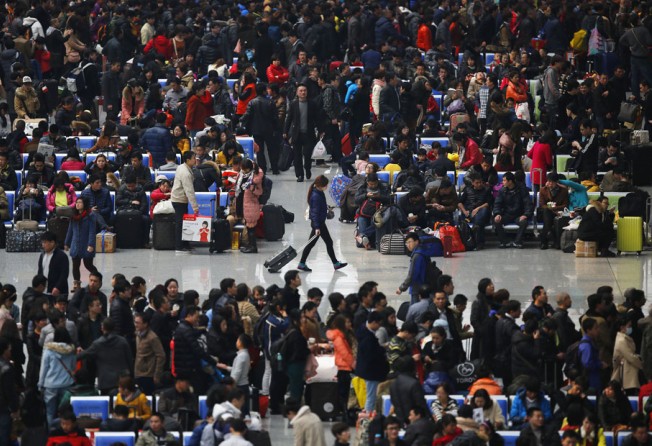Sound planning can ensure China's growing mega cities remain liveable
Winston Mok says government offices should be relocated as part of development of satellite towns

The greatest movement of people on earth is an annual ritual for China around the Lunar New Year. For the many "left behind" children under the care of grandparents, this may be the only chance in the year to see their parents who work in faraway cities.
Such a movement demonstrates the limited freedom involved in being able to migrate to work but not to settle. And, although the government has announced a gradual relaxation of restrictions to its hukou system, the first to integrate new migrants will be small cities and towns. Becoming a permanent resident in a mega city remains as tough as ever.
The planned relocation of wholesale markets from Beijing, displacing migrant workers in the process, epitomises the government's continued attempts to control the scale of its mega cities.
South Korea tried that half a century ago. As early as 1964, the cabinet of president Park Chung-hee resolved to control the population growth of the nation's large cities - much smaller than those in China today. In Seoul's first Basic Urban Plan, in 1966, its population was expected to grow from three to five million by 1985. But it hit that target in 1970.
Thereafter, despite repeated attempts at population control in the ensuing decades, greater Seoul has remained the focus of Korea's urban growth. In 1960, about a fifth of Korea's population lived in greater Seoul. Now, after an almost fivefold increase, it is home to nearly half the country's population. Despite its best efforts, the government could not fight the unstoppable force of urban concentration.
In much the same way, China's urbanisation will continue to unfold in the major centres where the jobs are. Today, only about 15 per cent of China's population lives in its top three urban regions: the Yangtze River Delta, Pearl River Delta and greater Beijing.
In Japan, almost 60 per cent of the population lives in its top three economic regions. China will also need concentrated urban development for an efficient economic structure, to compete with the likes of South Korea and Japan.
While Korea has failed to curtail population growth in greater Seoul, it has succeeded in distributing such growth away from the centre. Seoul's population peaked in 1990 and stabilised at 10 million while the adjacent Gyeonggi region has continued to grow. Seoul is surrounded by almost 30 smaller cities in Gyeonggi, the engine for greater Seoul's growth.
The relocation of government offices and state-owned enterprises outside Seoul is also helping to accelerate this growth.
Beijing municipal's leaders have made population control a top priority. But the city's real problem may be planning rather than scale.
Beijing's city planning has been hampered by the preponderance in the city centre of central government offices and state-owned enterprises, which are outside the control of the Beijing municipal government.
Through significant expansion of its territory in the 1950s, today's Beijing is more of a region than a city. Beijing has grown from about two-thirds of Hong Kong's size to 15 times its size. Even excluding its hilly areas in the northwest, Beijing has enough space to replicate the greater Seoul experience of urban development.
Like Tokyo, Beijing can be a metropolis consisting of many cities. Satellites can be developed within Beijing's perimeter, never mind in neighbouring Tianjin and Hebei.
In addition to linking them to central Beijing through rapid transit transport, building good schools and hospitals, and nice parks, will make them attractive alternatives to the city centre. Importantly, there need to be jobs in these new towns.
Unfortunately, due to short-term commercial considerations, many potential new towns in Beijing have been reduced largely to housing communities. Thus, higher-level co-ordination for the greater common good, sometimes with a national perspective, may be needed to overcome parochial or vested interests.
Liang Sicheng, the father of modern architecture in China, said: "City is a science. It is like a human body … if you do not treat it right, it will get sick … One day you will see huge problems in Beijing such as traffic, pollution and congestion."
More than 60 years ago, he foresaw Beijing's problems when his recommendation for polycentric development - multiple clusters of working and living spaces, with central government offices outside the city centre - was rejected.
China does not need to go as far as Korea, which is relocating some government ministries to the new administrative capital of Sejong city.
Although half a century late and a lot more expensive, China should consider moving some government and offices of state-owned enterprises away from central Beijing.
Winston Mok is a private investor, a former private equity investor and McKinsey consultant. An MIT alumnus, he studied under three Nobel laureates in economics